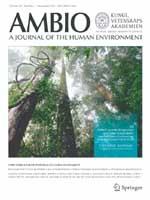China leads the world in afforestation, and is one of the few countries whose forested area is increasing. However, this massive “greening” effort has been less effective than expected; afforestation has sometimes produced unintended environmental, ecological, and socioeconomic consequences, and has failed to achieve the desired ecological benefits. Where afforestation has succeeded, the approach was tailored to local environmental conditions. Using the right plant species or species composition for the site and considering alternatives such as grassland restoration have been important success factors. To expand this success, government policy should shift from a forest-based approach to a results-based approach. In addition, long-term monitoring must be implemented to provide the data needed to develop a cost-effective, scientifically informed restoration policy.
How to translate text using browser tools
1 November 2011
Greening China Naturally
Shixiong Cao,
Ge Sun,
Zhiqiang Zhang,
Liding Chen,
Qi Feng,
Bojie Fu,
Steve McNulty,
David Shankman,
Jianwu Tang,
Yanhui Wang,
Xiaohua Wei
ACCESS THE FULL ARTICLE
It is not available for individual sale.
This article is only available to subscribers.
It is not available for individual sale.
It is not available for individual sale.
<
Previous Article
|
Afforestation policy
environmental degradation
Evironmental restoration
reforestation
sustainable development





